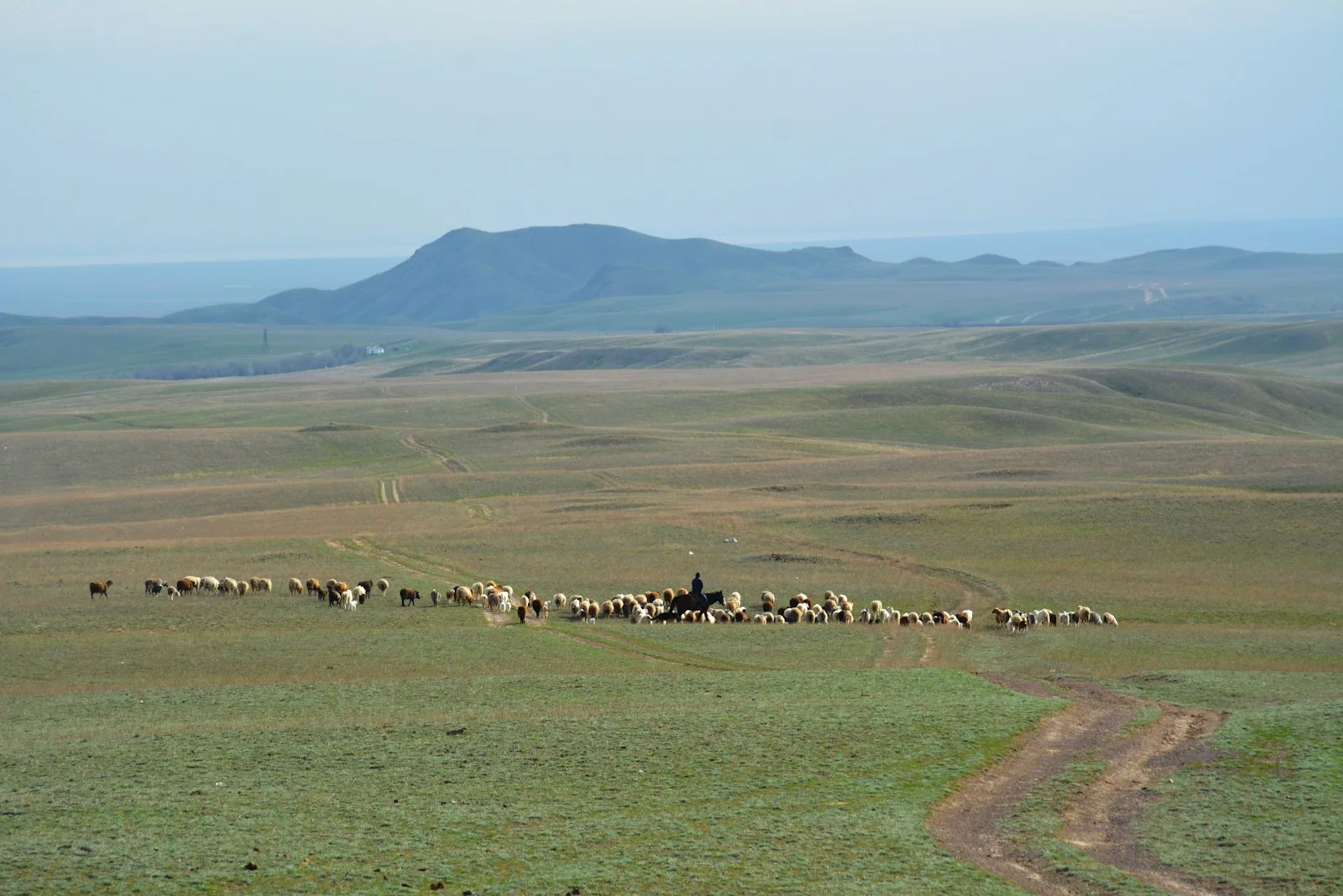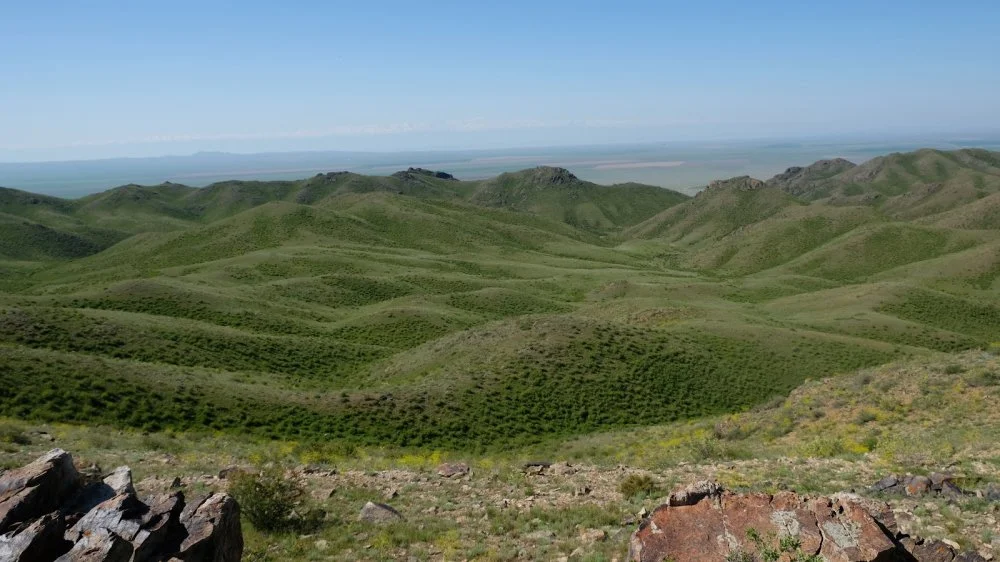Whose Furry Paw Is This?
Did Snow Leopards Really Inhabit the Arqarly Mountains?

Almaty region/Olga Gumirova
In 2020, the ‘Petroglyph Hunters’ made a remarkable discovery among a cluster of petroglyphs in the southern part of the Arqarly Mountains.
This well-known team of scientific volunteers, committed to preserving Kazakh heritage and culture, discovered a unique carving of a feline predator's footprint on a separate stone near the summit of the area's highest hill. Alexey Grachev, an expert from the Institute of Zoology in Almaty, identified the print as most likely one of a leopard. This finding is exceptional as no similar footprint carvings have been documented elsewhere in Kazakhstan. Even depictions of leopards themselves are scarce in petroglyphs, with only three such images having been found in Arkarly.

A rock with petroglyphs. The Arkharly Ridgel/Olga Gumirova
The snow leopard, or irbis, has been considered a sacred animal since the Bronze Age, and stylized images of this creature adorned especially valuable items of ritual significance and weapons. This practice was common among all the peoples of the Great Steppe—the Sakas, Sarmatians, and Turks. However, the image of the snow leopard was used much less frequently than those of other animals. This may be because, even in the past, this cautious predator, preferring to hunt stealthily and ambush its prey, was quite rare, and people seldom encountered it. It is also only occasionally mentioned in folklore and mythology.
The ancient artist-shaman's decision to carve a leopard footprint in this seemingly unlikely location is particularly intriguing. While these animals are typically associated with snowy peaks, the Arqarly Range, a small western offshoot of the Dzungarian Alatau in the Kerbulak district of the Almaty region, does not have any such features. Its highest point reaches only 1,126 meters above sea level, and the landscape is characterized by steppe and semi-desert vegetation. Spring brings tulips and poppies, while summer sees vast expanses of wormwood, with scarce water sources hidden in arid, rocky gorges.
Currently, the area is not home to the mountain goats and argali that are typically hunted by leopards, and leopard sightings have not occurred in a very long time. However, paleobotanists suggest the climate in this region was once different, supporting even Turanga forests (relatives of poplar trees). This implies the presence of ungulate herds and a habitat suitable for leopards.
Interestingly, leopards have been documented in the Altyn-Emel State National Nature Park, which has similar natural and climatic conditions to Arqarly. This protected area provides ample prey for the predator, including numerous rodents and small ungulates, suggesting that Arqarly might have once been equally hospitable to leopards. Thus, leopards could certainly have lived in Arqarly, and the discovery of this petroglyph seems to confirm this.
The carved footprint is almost identical in size to a real leopard's print. The reason for this choice remains a mystery and open to interpretation. One possibility is that the ancient artist-shaman once encountered a fresh track left in the snow or moist clay by the king of this mountain and, inspired by the encounter with the mountain's elusive predator, was compelled to immortalize the fleeting mark in stone.

Almaty region/Olga Gumirova



